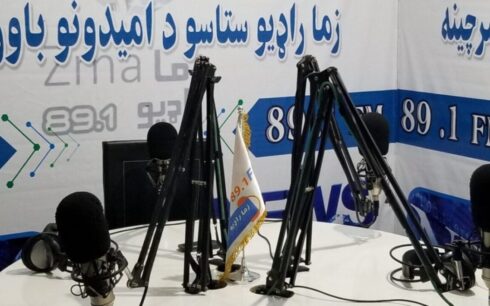KABUL, Afghanistan — The Taliban have extended their ban on the publication and broadcast of images depicting living beings to three additional provinces, bringing the total number of affected regions to 10, according to a media watchdog.
The Afghanistan Journalists Center (AFJC) reported Thursday that the Ministry for the Promotion of Virtue and Prevention of Vice, under the Taliban, issued new directives to media outlets in Badakhshan, Baghlan, and Nimroz provinces, instructing them to refrain from publishing or airing images of humans or animals.
The AFJC said it obtained voice messages from Taliban officials, shared via WhatsApp groups that include journalists and provincial authorities. In the recordings, Taliban figures directed local media to adhere to Article 17 of the group’s morality law, which prohibits the depiction of living creatures in any form of media.
Amu News also reviewed a voice message from the Taliban’s head of the virtue and vice department in Baghlan, in which he explicitly ordered media outlets to stop publishing such content.
Local sources in all three provinces confirmed to the AFJC that Taliban officials summoned directors of local media in person and warned them of “serious consequences” if they failed to comply.
According to the AFJC, Badakhshan currently hosts 10 private radio stations and two television channels; Baghlan has one television station and five radio outlets; and Nimroz has two TV stations and four radio stations. State-run National Radio and Television and the Bakhtar News Agency also operate in these provinces.
The watchdog warned that enforcing the ban could force television broadcasters to shut down entirely and severely limit the operations of other media platforms.
The restrictions stem from a decree issued by Taliban leader Hibatullah Akhundzada in July 2023. Article 17 of the Promotion of Virtue and Prevention of Vice Law assigns Taliban morality enforcers the task of preventing the publication of images depicting living beings.
The AFJC reported that similar directives have already been enforced in at least seven other provinces, including Kandahar, Takhar, Badghis, Helmand, Nangarhar, Nuristan, and Farah. While restrictions in some areas have reportedly eased in recent months, the latest expansion has raised fresh concerns about press freedom in Afghanistan.
The AFJC condemned the expansion, calling it a serious blow to media operations and freedom of expression. It urged Taliban authorities to reverse the ban and lift other media restrictions imposed over the past three years.
“The ban has already had a profound effect on television and visual media, and it is increasingly affecting radio broadcasters, particularly those that depend on social media platforms,” the organization said.




